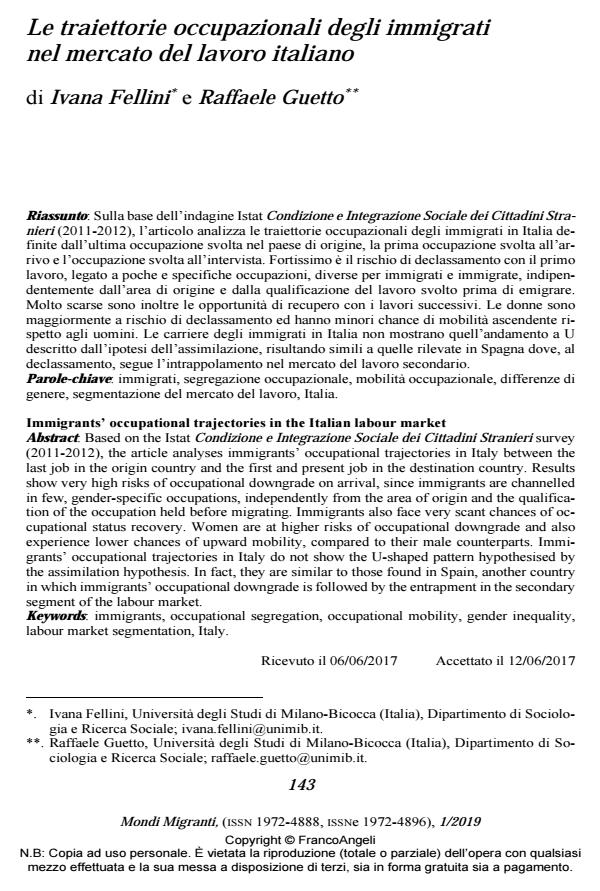Immigrants’ occupational trajectories in the Italian labour market
Journal title MONDI MIGRANTI
Author/s Ivana Fellini, Raffaele Guetto
Publishing Year 2019 Issue 2019/1
Language Italian Pages 27 P. 143-169 File size 241 KB
DOI 10.3280/MM2019-001009
DOI is like a bar code for intellectual property: to have more infomation
click here
Below, you can see the article first page
If you want to buy this article in PDF format, you can do it, following the instructions to buy download credits

FrancoAngeli is member of Publishers International Linking Association, Inc (PILA), a not-for-profit association which run the CrossRef service enabling links to and from online scholarly content.
Based on the Istat Condizione e Integrazione Sociale dei Cittadini Stranieri survey (2011-2012), the article analyses immigrants’ occupational trajectories in Italy between the last job in the origin country and the first and present job in the destination country. Results show very high risks of occupational downgrade on arrival, since immigrants are channelled in few, gender-specific occupations, independently from the area of origin and the qualification of the occupation held before migrating. Immigrants also face very scant chances of occupational status recovery. Women are at higher risks of occupational downgrade and also experience lower chances of upward mobility, compared to their male counterparts. Immigrants’ occupational trajectories in Italy do not show the U-shaped pattern hypothesised by the assimilation hypothesis. In fact, they are similar to those found in Spain, another country in which immigrants’ occupational downgrade is followed by the entrapment in the secondary segment of the labour market.
Keywords: Immigrants, occupational segregation, occupational mobility, gender inequality, labour market segmentation, Italy.
- Reimagining the homeland: diasporic belonging among Turkish and Kurdish second generations in Italy Gül Ince-Beqo, Maurizio Ambrosini, in International Review of Sociology /2022 pp.483
DOI: 10.1080/03906701.2022.2121118 - Overeducation of migrants in Lombardy: A trend analysis 2008–2021 Sara Maiorino, Laura Terzera, in International Migration /2024 pp.217
DOI: 10.1111/imig.13306
Ivana Fellini, Raffaele Guetto, Le traiettorie occupazionali degli immigrati nel mercato del lavoro italiano in "MONDI MIGRANTI" 1/2019, pp 143-169, DOI: 10.3280/MM2019-001009